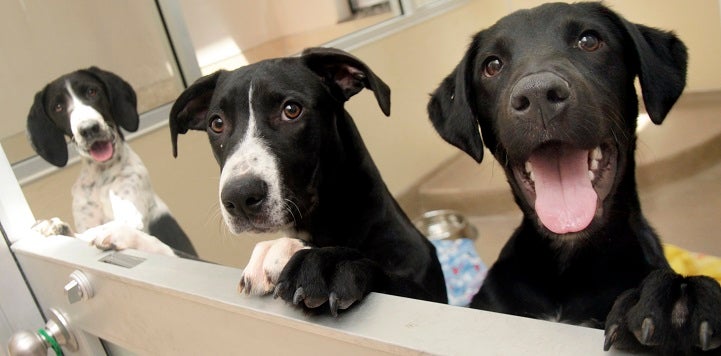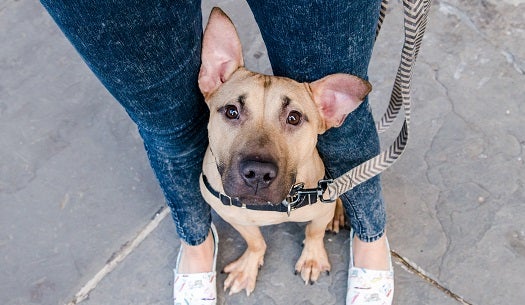
Overwhelmed? Under-resourced?
8 steps to managing your shelter when everything seems unmanageable
Not a day goes by lately that I don’t hear from an animal welfare organization struggling to keep its head above water. Too many animals coming in and too few leaving. Empty positions and a lack of qualified applicants. Medical challenges and limited veterinary resources. And don’t forget the ongoing, overwhelming kitten season this year. It’s no wonder people feel discouraged, overwhelmed and unsure of how to move forward.
But I also often hear from shelters that are managing to push past the chaos of the day-to-day, who are saving lives in spite of the many challenges thrown at them. Here are eight steps you can take to move past the chaos without sacrificing quality of care, a high level of service to the community and the sanity of your staff and volunteers.

Temporarily shift to triage-based/emergency-only intake. Shelters have a responsibility to help those animals who are badly injured and those community members in immediate need of support for their pets. Triage is an essential tool in ensuring care to those who are most in need of it, and it will help you get ahead of the game when your resources are strained.
If you are trying to take care of more animals than you have space, staff or other resources available, that’s an emergency. Even if you only limit intake for a week, that will give you time to implement some strategies to manage your population (e.g., transport). It will also give your staff a break from the chaos of an endless stream of animals coming through the door.Most likely, you did some sort of emergency-only intake during COVID when it was mandated. In fact, some shelters kept pandemic processes in effect permanently. There’s no reason why you can’t use those same procedures to get through rough days or weeks. Just make sure you are transparent with the public in explaining why you are changing your procedures, not to mention how they can help.
Hold a free or reduced-fee adoption weekend. This one is pretty self-explanatory, and you probably already use adoption specials during times of strain on shelter resources. But if you haven’t taken the leap to offering free adoptions, now might be the time to try it.
Worried about poor outcomes for free animals? Try not to be. Our goal is to move more animals out of the shelter and into homes, and we know reducing or eliminating fees does that. Likewise, the data is in showing that most animals acquired during a free adoption event at a shelter stay in their homes and that we shouldn’t worry about a huge return rate of animals in the weeks following such an event.Clear all of your adoption barriers. There’s no point in doing a special adoption weekend if your processes make it impossible for people to take home their new family member ASAP. Another COVID lesson we should have learned is that we can trust people (though I’ve been hearing that the adoption barriers many shelters removed pre-pandemic have worked their way subtly back in as they've gained new staff).
Look at your adoption application and remove every barrier that gets in the way of an animal leaving your shelter for a new home. Requiring landlord, vet and reference checks only unnecessarily hinders the process of adoption, and let’s face it – if I want to adopt from you, I’m likely to only give you references that will say what you want to hear. Likewise, arbitrary requirements like insisting that every adopter of a large dog have a fenced yard ignores the fact that dogs without such a space are more likely to go on frequent walks with their owners.We’ve written a lot in this space about getting out of our own way, so do it. Not only that but make the adoption process easy and fun and your shelter will gain even more supporters as well as some excellent word-of-mouth that will stand you well the next time you have a crisis.

Be positive. As you consider how to market your special adoption weekend, try to stick to positive messaging when explaining your predicament. If we learned anything in the past few years, it’s that the public wants to help, but they need to know when we need help. They also need to know how they can help. And the public does become leery when their local shelter takes The Boy Who Cried Wolf approach, flooding social media with pleas for help in all caps every other week.
Once you’ve decided on your messaging, spread the word any way you can – from old-school flyers posted in coffee shops to fun TikTok videos. Call every media outlet in the city, tell them you're doing a free adoption event and be very clear why you are doing so.Look into paid social ads for your community. Try to do radio interviews or get an ambassador animal onto the morning TV news show. Hire a town crier. OK, kidding on that last one but you get the drift. And always ask your volunteers to help spread the word.
Take a look at all your processes. Once you go to triage-only intake, and have your adoption event, you’ll have gained some capacity and breathing room. Now it's time to scrutinize your processes and see where the bottlenecks are occurring.
 What are the systems that slow animals getting out of your shelter? Vet clinic efficiency is a big one, making this a critical time to prioritize services. Behavior evaluations are another, even though they only provide us a snapshot in time and don’t give the full picture of how an animal will behave in a home. So why do them?
What are the systems that slow animals getting out of your shelter? Vet clinic efficiency is a big one, making this a critical time to prioritize services. Behavior evaluations are another, even though they only provide us a snapshot in time and don’t give the full picture of how an animal will behave in a home. So why do them? Be honest with yourself about your shelter hang-ups; even better, ask someone else to help you diagnose any issues. The point is to identify the snags and do your best to work through them.
This is when you should be at least considering some form of coordinated entry. We’ve seen that data proves the power of managing intake and enlisting the public to be foster finders and increase the odds that animals get back to their homes without our help. For some tips on how to make sure that you set up a robust, successful program, read this spotlight by senior director of regional programs Makena Yarbrough or listen to this podcast or town hall featuring Michelle Dosson, executive director of Best Friends Salt Lake City, and Jill Mollohan, associate director of Lynchburg Humane Society.
Make it a point to review your processes for bottlenecks on a regular basis, because you never know when old bad habits will creep back in – or when new ones will pop up.
Find solutions other than intake. You can’t control the flow of animals into your shelter and the demand on your resources if the de facto solution for every person walking through the door is to accept their pet. As an industry, we are working to change the role of shelters in the community and that means setting up processes that lead to better solutions for people and their animal companions.
As you restart your normal intake processes (or your “new” normal ones), consider ways you can help people in keeping or rehoming their animals – both at the front desk and in the field. There are a lot of resources out there that walk people through both ways to keep their pets and find new homes for them. Make them readily available to the public both at the shelter and online so that coming to the shelter isn’t their only choice.
Last year, we even collaborated with the International Municipal Lawyers Association (IMLA) to create the manual People, Pets, and Policies: Towards Community Supported Animal Sheltering. It explores everything from integrating human and animal services to dismantling the thornier issues around breed-specific legislation and housing limitations for pet owners.
You might even ask the public to put together a mutual aid group designed to help pet owners. And if you haven’t taken a look at the technology available to help find homes for animals, you should because there are options that help both those animals that don’t come to the shelter and those that do.

Keep the momentum going. Take steps now to reduce the odds of becoming overwhelmed again. In addition to building processes designed to create positive outcomes of the shelter or find community based solutions other than intake, look at your flow and fast-track those animals who can be fast-tracked. Identify potential long timers early in the process so you can start promoting them on day three, not day 30.
Think long-term about cats, too. You know all those people walking in the door with boxes of kittens? Even if you can’t convert them to fosters, try to convert them into trappers. They can stop the cycle of endless kittens needing help by taking home humane traps and doing a little neighborhood TNR.Plan for chaos. We know our industry experiences regular crises; it only makes sense to plan for them in advance. Once your organization takes the time to map out strategies like those listed above, you’ll be surprised how much less overwhelming it is to deal with those days when it seems there is no end to the number of people and animals who need our help.
Focusing on those things we can control not only improves our ability to create positive outcomes, it also improves morale by removing the helpless feeling that can creep in. Focus on winning the day – with more positive outcomes than intakes each day. You won't win them all, but it will change how you do your work and view your work.

Brent Toellner
Senior director of lifesaving programs
Best Friends Network
If you enjoyed this editorial, you can find our complete catalog of editorials here.